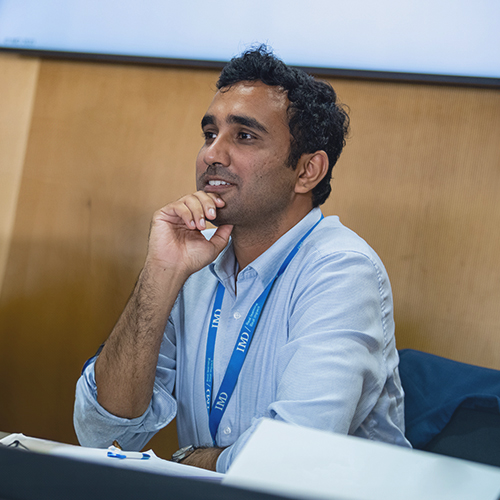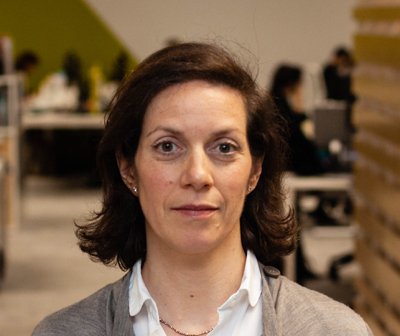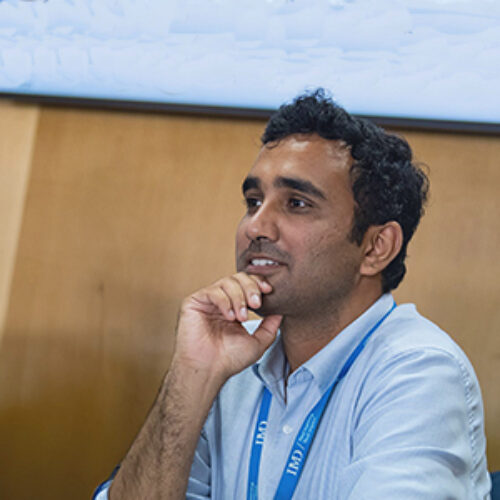
Swiss banking: In search of a secure future
In light of the Swiss Federal government’s report following the Credit Suisse debacle, how can the Swiss banking sector regain its reputation for stability and resilience? ...

by Michael Skapinker Published 19 December 2023 in Purpose • 7 min read
Nesta has invested in Mixergy, which sells a smart hot water tank that predicts when a household actually uses hot water so that they only heat up the water they need.
In the early 2000s, when Lisa Barclay was working for Bridges Ventures, a pioneering UK fund manager that aimed to achieve social and environmental goals as well as financial returns, people couldn’t work out what she was talking about.
“We would go on marketing trips around the country to talk to corporate finance advisors, lawyers, and accountants to try to drum up deal flow and find businesses that we could invest in,” Barclay recalls. “In so many conversations, they would look at us as though we were quite peculiar. You know: are you a charity? They couldn’t really reconcile how you could possibly make commercial investments at the same time as doing some social or environmental good. It was a complete anathema.”
Today, talk about environment, social, and governance (ESG) – and how to do well financially by doing good – is everywhere. But Barclay, who is now executive director responsible for impact investments at Nesta, a British innovation organization, says impact investing is different from ESG, which is often about eliminating negatives, such as pollution, or avoiding entanglement with tobacco or gambling. Impact investors seek out both a financial return and a measurable social or environmental impact. “It’s a dual purpose, double bottom line,” she says.

Manage social, political, and regulatory dynamics to accelerate your sustainability transformation.
Nesta began in 1998 as the UK government-supported National Endowment for Science, Technology, and the Arts under the chairmanship of David Puttnam, producer of hit films such as Chariots of Fire, Midnight Express, and The Killing Fields. It supported innovation in government and backed developments such as a solar-powered fridge. In 2012, Nesta left the government’s embrace to become an independent charity that aims to “design, test, and scale new solutions to society’s biggest problems”.
Before joining Nesta, Barclay’s career, after a Cambridge degree, included a stint as a researcher for Gordon Brown and other then-opposition Labour politicians. She went on to work as a management consultant and co-founded a tech startup, followed by an MBA at London Business School. Bridges Ventures, her next stop, was co-founded by Sir Ronald Cohen, doyen of the UK venture capital industry, an adviser to both Brown and Tony Blair, and a pioneer of socially impactful investing. After Bridges, she spent more than eight years at Social Finance, a non-profit promoting change on issues from children’s services to homelessness, also co-founded by Cohen, before moving to Nesta to run its impact investing team in 2019.
Nesta’s impact investment arm sits within the wider organization’s work, which includes research, training, leadership mentoring, and bringing innovative people together. The impact arm, which has investments in around 30 companies, focuses on organizations that fulfill one of Nesta’s three core missions: a fairer start (narrowing the gap between rich and poor while growing up), a healthy life (increasing people’s average number of healthy years and reducing health inequalities), and helping to decarbonize the UK’s economy and making it more productive.

Companies in Nesta’s impact investing portfolio include Arbor Education, which provides schools with management information systems that help them to track the performance of their students and staff. In the health sector, Nesta has backed Skin Analytics, which uses artificial intelligence to provide early diagnosis of skin cancer. To help fulfill Nesta’s decarbonization goal, it has invested in Mixergy, which sells a smart hot water tank that predicts when a household uses hot water so that they only heat up the water they need.
What level of financial return on investment is Barclay looking for from these kinds of investments? Is impact investing necessarily less profitable than straightforward commercial investing? Impact investors’ return on investment policies cover a spectrum, she says. There are some impact investors on the philanthropic end who are happy just to get their money back, or even a portion of it.
“The other end of the spectrum is the fully kind of market-returns commercial end. My team, and what I’m doing, currently sits much closer to that end of the spectrum,” she says. Nesta funds its impact investments from its endowment fund alongside conventional venture capital and industry investors. Its fellow-investors in Mixergy, for example, include EDP Ventures, the investment arm of the Portuguese energy utility, and UK energy giant Centrica.
What does Barclay look for in the companies she invests in? As well as falling within one of Nesta’s three missions, “we’re looking at founders who are committed and driven and have some track record typically,” she says. “But also founders who care about the impact and understand where we’re coming from in terms of that integral relationship between impact and profit.”
Increasingly, younger startup founders, millennials, or Generation Z care about their impact on society. “Not always, but often. They really care about creating a company that’s going to have a social purpose or an environmental purpose, as well as making a lot of money. So, just to put some kind of meat on the bones of that, we will always co-develop an impact plan with a founder who we’re going to back.”
She adds: “That is a really good process to flush out: what do you want your company to achieve ultimately? So we define the aspirational impact outcome, then we look at what the company actually does. And then we look at how do you get from A to B. What are the assumptions you need to make? What’s the data that you need to collect? So that’s how we define the impact KPIs with the founders.”

Measuring outcomes – both the financial and impact outcomes – is vital to Nesta, with the measurements specific to each company. In the case of Mixergy, “we are looking at the number of hot water tanks that they’re selling each quarter, the carbon emissions avoided as a result of those tanks being installed in homes, and the cost savings on energy bills for those households.”
How active an impact investor is Nesta? “Again, case by case, but we are on the active end of that spectrum, in that we typically will take a board or observer seat and try and be as supportive as possible, whether that is strategically or helping with recruitment, networks, fundraising.”
We also want to make a profit, and then that profit gets put back into the charity to recycle and either make more investments or deliver on our charitable purpose.Lisa Barclay
Although Barclay has a team of about 10, she relies on the larger Nesta organization of 270 people who investigate – along with academics, government, charities or companies – what innovations would help advance the three core Nesta goals. Her team then invests in companies working in those fields. “We also want to make a profit, and then that profit gets put back into the charity to recycle and either make more investments or deliver on our charitable purpose,” she says.
Barclay’s team can also provide the companies it invests in with insights from the wider Nesta organization’s research. “We have a huge resource and skill base that we can connect our founders and their ventures to, in order to, for example, understand a little bit more about government policy direction of travel, or maybe understand some of the more technical aspects of the energy transition,” she says.
Nesta can also give the companies it invests in a higher profile. Recently, she says, Nesta ran an event where the founder of one of the companies it invests in spoke on a panel with representatives from energy provider Octopus Energy and Ofgem, the UK energy regulator. “We can give them a platform as well. That’s a slightly different value-add than your typical VC.”

Contributing editor of the Financial Times
Michael Skapinker is a contributing editor of the Financial Times and the author of Inside the Leaders’ Club: How Top Companies Deal with Pressing Business Issues. He is also a member of the I by IMD editorial board.

Manage social, political, and regulatory dynamics to accelerate your sustainability transformation.

19 July 2024 • by Peter Nathanial, Ludo Van der Heyden, Salvatore Cantale in Finance
In light of the Swiss Federal government’s report following the Credit Suisse debacle, how can the Swiss banking sector regain its reputation for stability and resilience? ...

17 July 2024 • by Michael R. Wade, Evangelos Syrigos in Finance
Companies that excel in both digital and sustainable transformation attract a stock market premium, according to research. So, how do you tap into that value? ...

10 July 2024 • by Michael Skapinker in Finance
A rise in climate change protests against leading arts institutions spells trouble for the future of corporate sponsorship. Companies and cultural organizations must learn to manage the risks....

8 July 2024 • by Richard Baldwin in Finance
As the world’s largest democracy prepares to overtake China in terms of economic growth, it offers a huge investment opportunity, explains IMD’s Richard Baldwin....
Explore first person business intelligence from top minds curated for a global executive audience